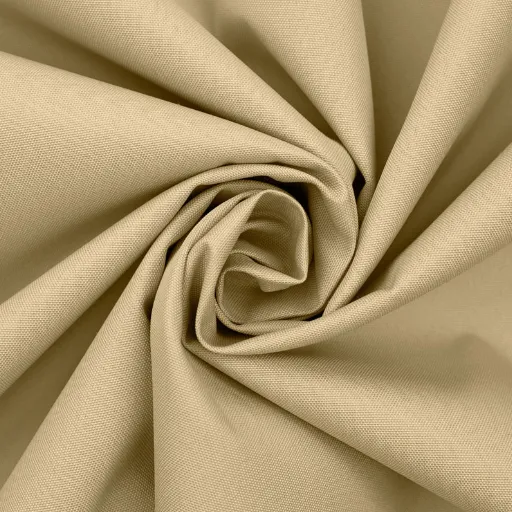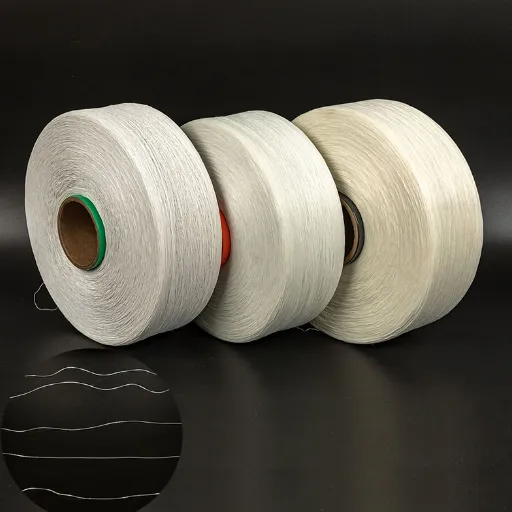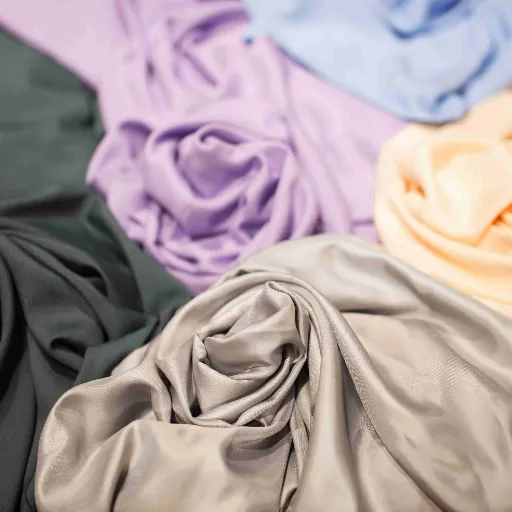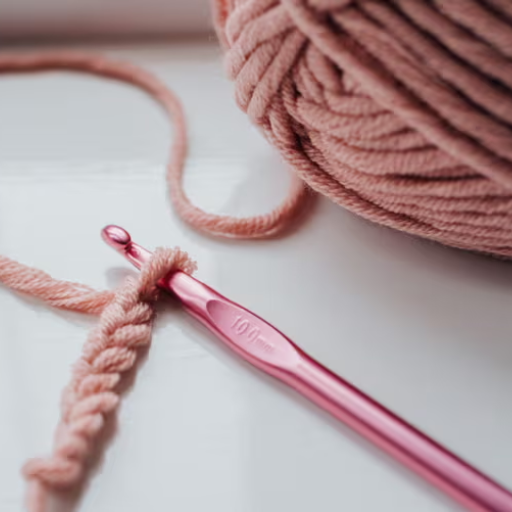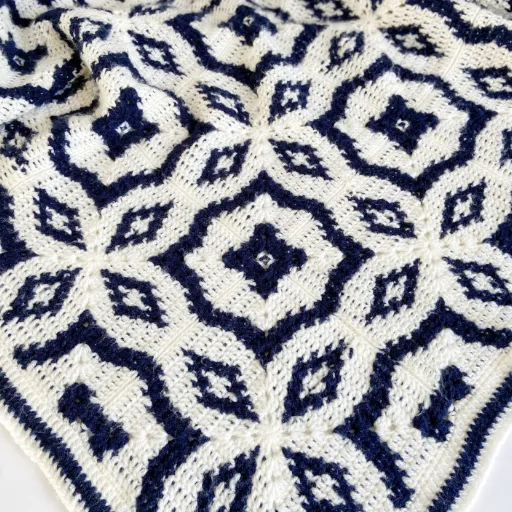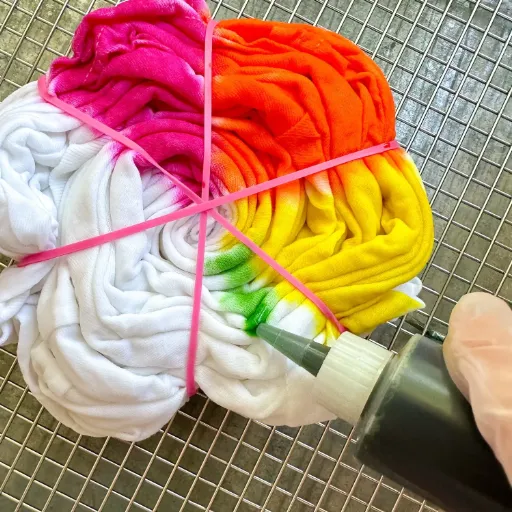Choosing the correct yarn is equally critical as selecting the design itself when making the best baby blanket. For every project involving delicate and sensitive skin, softness, durability, and safety are the top priorities. Out of the many options provided, acrylic yarn is often the first choice due to its economy and versatility—but is it the best choice of all yarn for baby blankets? This article will not only discuss the advantages and disadvantages of acrylic yarn for baby projects but also compare it to other commonly used types of yarn. It will then guide you towards a choice that makes your homemade blanket beautiful, comfortable, and safe for the little ones. Continue reading and learn everything necessary before you begin your next baby blanket.
Benefits of Using Acrylic Yarn for Baby Blankets
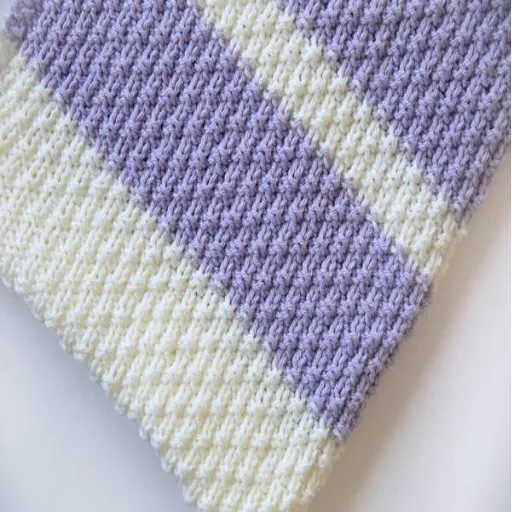
- ✓Affordability – Acrylic yarn is budget-friendly, making it an excellent option for creating baby blankets without breaking the bank.
- ✓Softness – Many modern acrylic yarns are designed to be soft and gentle, ensuring comfort for a baby’s sensitive skin.
- ✓Durability – Acrylic yarn is long-lasting and resistant to wear and tear, helping the blanket maintain its shape and color even after multiple washes.
- ✓Ease of Care – Most acrylic yarns are machine washable and dryable, making them convenient for busy parents.
- ✓Variety of Colors – Acrylic yarns are available in an extensive range of colors and styles, allowing for creative and personalized blanket designs.
Softness and Comfort
When selecting fabrics for baby blankets, softness and comfort are the top priorities. Acrylic yarn, with its soft texture, ensures a baby remains warm and comfortable. While natural fibers like wool may be prone to itchiness, acrylic yarn is hypoallergenic, making it very friendly to sensitive skin. Moreover, the drafty quality of acrylic yarn allows the baby blanket to be both soft and cozy, making it an everyday-use soft blanket.
Easy Maintenance
Acrylic yarn has a significant advantage not only in terms of a gentle & soft feel, but it also ranks among the best options for a person who prioritizes practicality. One main benefit is how easy it is to look after, hence, being an ideal choice for parents who are always busy. Most acrylic yarn products, unlike other delicate materials that require either hand washing or dry cleaning, can be cleaned using a washing machine and dried in a dryer. Durability means that baby blankets made with acrylic yarn can be cleaned often and still maintain their original shape, color, and softness. According to trendy searches, people asking about ‘baby blanket materials that are easy to clean’ often mention acrylic yarn as the best choice for hassle-free maintenance. Parents are thrilled that these blankets not only last for a long time but also remain soft and absorbent even after multiple washes, providing both convenience and comfort for their kids for an extended period.
Potential Drawbacks to Consider
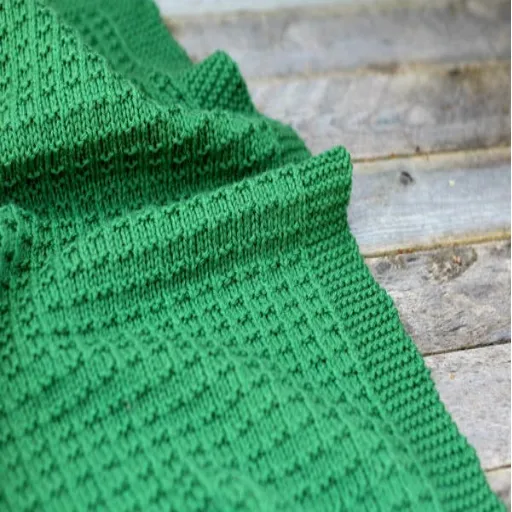
Using acrylic yarn for baby blankets may have one major drawback: it is less breathable than cotton and wool. This could, in turn, make the blanket too warm, thus preventing its usage in the summertime or warmer regions. Moreover, acrylic yarn is made from synthetic fibers coming from petrochemicals, which, in the long run, is more polluting than natural fibers like cotton and wool. Lastly, although acrylic is widely known for its softness, some low-grade yarns may be less comfortable on the baby’s delicate skin due to the non-absorbent nature of the fabric.
Skin Sensitivity Risks
Acrylic yarn, which is very popular due to its low cost and ease of care, may pose a danger to babies with sensitive skin in some cases. Recent data and user opinions in forums suggest that some infants may experience mild skin irritation or allergies due to the presence of synthetic fibers, such as acrylic. This reaction is believed to result from the chemicals and dyes used in the production process. To minimize risks, it is advisable to use high-grade, hypoallergenic acrylic yarns or perform a patch test before using acrylic-based baby blankets. In addition, washing the items thoroughly after purchasing them will help eliminate any chemical residues and lower the chances of adverse reactions.
Limited Breathability
Acrylic fabrics are widely recognized for their properties, but alongside this, they also have the disadvantage of not being breathable, unlike natural fibers such as cotton or wool. This limitation results in the accumulation of heat and moisture around the wearer, making them uncomfortable, especially in hot climates or during the summer season. The most recent search trend revealed that consumers frequently searched for information on whether acrylic materials cause discomfort or sweating, highlighting a concern. The response really depends on the circumstances of use; acrylic can feel warm and comfy in winter, but it can be the exact opposite in summer, making you feel hot and not absorb sweat. To avoid issues related to the use of acrylic, heavy-duty blankets for infants can be made by either mixing it with breathable materials or using lighter ones.
Comparing Acrylic with Other Yarn Types
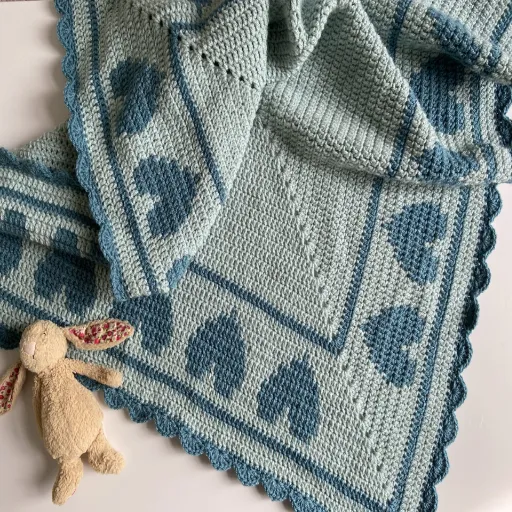
The use of acrylic yarn is one of the best things. It is one of the most affordable, durable, and easy-to-care-for materials. When it comes to synthetic yarns, the price is considerably lower than that of natural fibers, such as wool or cotton, which is why acrylic is so attractive for making long-lasting and budget-friendly projects. However, the downside of acrylic is that, unlike wool, it is not breathable and warm; therefore, in very cold or hot conditions, it can be a disadvantage. Cotton is indeed the best in terms of breathability and softness, but then again, its durability is lower, and it is more prone to forming pills than acrylic. Thus, acrylic is the number one choice for projects that require good wear and tear resistance, easy care, and low cost. Besides, soft and pleasant-fibered natural materials may gain a share of preference based on the other side of the coin: texture and comfort.
Acrylic vs. Cotton
Here’s a concise comparison table based on the latest research:
| Parameter | Acrylic Yarn | Cotton Yarn |
|---|---|---|
| Softness | Soft, mimics natural fibers | Naturally soft, gentle on skin |
| Durability | Highly durable, resists wear and pilling | Durable but prone to shrinking |
| Breathability | Less breathable, traps heat | Highly breathable, ideal for warm climates |
| Hypoallergenic | Hypoallergenic if certified | Naturally hypoallergenic |
| Ease of Care | Machine washable, quick-drying | Requires delicate washing |
| Cost | Affordable and budget-friendly | More expensive than acrylic |
| Color Variety | Wide range, vibrant, long-lasting | Limited but natural tones |
| Eco-Friendliness | Synthetic, less eco-friendly | Natural, biodegradable |
| Weight | Lightweight, easy to handle | Heavier, especially when wet |
| Best Use | Every day, cost-effective projects | Premium, heirloom-quality projects |
Acrylic vs. Bamboo
Here’s a concise comparison table based on the latest research:
| Parameter | Acrylic Yarn | Bamboo Yarn |
|---|---|---|
| Softness | Soft, mimics natural fibers | Ultra-soft, silky texture |
| Durability | Highly durable, resists wear and pilling | Durable but prone to fraying |
| Breathability | Less breathable, traps heat | Highly breathable, moisture-wicking |
| Hypoallergenic | Hypoallergenic if certified | Naturally hypoallergenic, antibacterial |
| Ease of Care | Machine washable, quick-drying | Often requires handwashing |
| Cost | Affordable and budget-friendly | More expensive than acrylic |
| Color Variety | Wide range, vibrant, long-lasting | Limited but natural tones |
| Eco-Friendliness | Synthetic, less eco-friendly | Eco-friendly, renewable resource |
| Weight | Lightweight, easy to handle | Lightweight, drapes beautifully |
| Best Use | Every day, cost-effective projects | Premium, eco-conscious baby products |
Expert Tips on Choosing the Best Yarn for Baby Projects
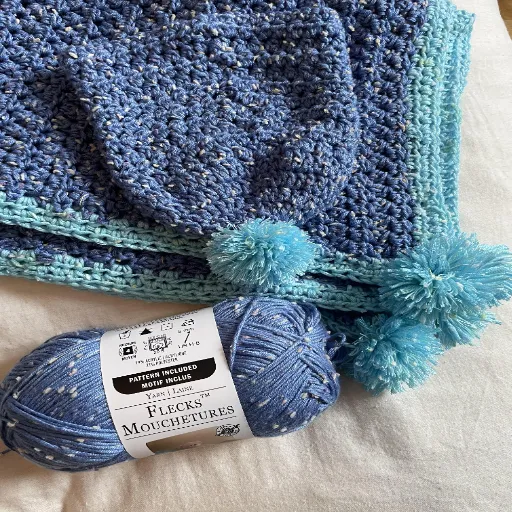
1Softness is Key
Choose yarns made from natural fibers, like bamboo or cotton, which are the most hypoallergenic and soft for a baby’s sensitive skin. Ensure the yarn has a smooth feel and is free from scratchy textures.
2Check for Hypoallergenic Options
Since infants may have very sensitive skin, always choose hypoallergenic yarns to minimize the chances of problems or allergies. Organic cotton or specific baby-friendly yarn lines are the best options.
3Washability Matters
In any case, always choose yarn that is machine washable and durable. Baby blankets or clothes are examples of projects that require constant cleaning; thus, easy-care yarns save time and effort.
4Stick to Lightweight Yarns
DK or sport-weight yarns are considered lightweight yarns that are best suited for baby items. They give a perfect mix of warmth and airiness without being too thick.
5Avoid Loose Fibers or Glitter
Loose fibers or glitter can easily get into a baby’s mouth and cause choking or discomfort if the baby has sensitive skin. For this reason, choose yarn that is smooth and tightly spun, as it is less likely to cause a baby to choke and is therefore safer.
Look for Certifications
When selecting yarn for baby items, it is advisable to consider certifications that confirm the material is safe and non-toxic. The Oeko-Tex Standard 100 or GOTS (Global Organic Textile Standard) certifications are among others that signify the yarn has undergone stringent testing for harmful substances and has been deemed environmentally and safety-wise according to high standards. This means that the end product made from such yarn will not irritate a baby’s delicate skin and will not contain potentially harmful chemicals. By using certified yarns, the manufacturer is assured that he is producing not only safe but also eco-friendly items for the baby.
Test for Softness
Testing the yarn for softness is not only a simple but also a necessary step in ensuring that it is suitable for baby projects. First, gently rub the yarn against your skin on your wrist or the inside of your arm, as these areas are the most sensitive and can mimic the baby’s skin. Additionally, create a small swatch by knitting or crocheting a few rows to assess how the yarn behaves and how the finished fabric feels to the touch. Pay attention to whether the yarn feels scratchy or stiff, or whether it irritates your skin in any way. Choose from yarns that are “baby soft” or those made from natural fibers like bamboo, cotton, or merino wool, which are renowned for their softest touch. Always prioritize testing before the project, so you can ensure the yarn is comfortable and suitable for babies.
Care and Maintenance of Acrylic Baby Blankets
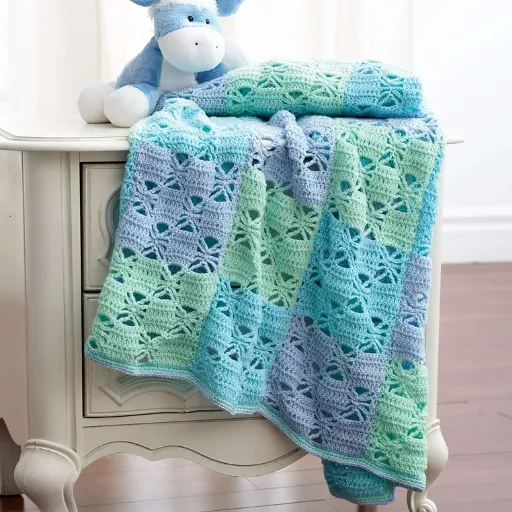
Acrylic baby blankets are highly resilient and require minimal maintenance, making them an ideal option for parents. To keep them soft and to get the most out of their life, just follow these steps:
- Washing – Wash on a gentle cycle in your washing machine with cold or lukewarm water. Use a detergent that is mild and free from harsh chemicals and fragrances. This way, you will avoid irritating the baby’s skin.
- Drying – Air-drying is preferable for preserving the blanket’s texture; however, if you are using a dryer, select the low heat setting to prevent damage or shrinkage.
- Avoid Heat – Do not use high temperatures for ironing or washing, as the acrylic fibers might melt or become misshapen.
- Spot Cleaning – Use a damp cloth or a mild cleaning solution to deal with minor stains and prevent them from becoming permanent marks.
Washing Tips
To ensure that my acrylic baby blanket stays in excellent condition, I constantly opt for hand washing or the delicate cycle of my washing machine. I take care to work with cold water and a gentle detergent, avoiding bleach and other strong chemicals. For drying, I prefer air drying to maintain its softness. However, if I have to use a dryer, I will opt for a low-heat setting to avoid any damage.
Drying and Storage
When drying and storing an acrylic baby blanket, proper care will ensure its longevity. Air drying is the best option after washing, as it helps the blanket remain soft and prevents shrinkage. Place the blanket on a clean surface, away from direct sunlight, and use this method to prevent it from fading. If a dryer is used, select a low heat or delicate setting to avoid damage to the fibers. When completely dry, fold the blanket neatly and store it in a cool, dry place. Do not use airtight containers as they trap moisture and cause odors or mildew. For extra protection, consider using a breathable storage bag that prevents dust from accumulating on the blanket and keeps it fresh. By following these steps, you can enjoy the blanket’s quality for many years to come.
Reference Sources
Here are three professional and authoritative reference sources that can help verify the correctness of your article on “Is acrylic yarn good for baby blankets”:
University of Minnesota Conservancy
Title: Buying and caring for blankets
Relevance: The discussion focuses on the characteristics of blankets made from various brands of fibers, including acrylic.
Cedarville University Digital Commons
Title: Yarn and Paintbrushes
Relevance: It discusses different types of yarn, specifically acrylic, while exploring various crafting projects associated with babies, such as blankets.
Science.org
Title: Flame-retardant additives as possible cancer hazards
Relevance: The paper raises safety concerns about the use of chemical treatments in fabrics, which also apply to acrylic yarn.
Frequently Asked Questions (FAQs)
What is acrylic yarn made of?
Acrylic yarn is made from synthetic fibers that are derived from petroleum products. It is known for being lightweight, soft, and durable, making it a popular choice for various knitting and crocheting projects, including baby blankets.
Is acrylic yarn safe for babies?
Yes, acrylic yarn is generally considered safe for babies. It is non-toxic and hypoallergenic, which means it is unlikely to irritate the sensitive skin of babies. However, always check the yarn label for any specific care instructions or warnings.
Can I use acrylic yarn to knit baby clothes?
Acrylic yarn is an excellent option for knitting baby clothes. It is easy to care for and can withstand frequent washing in a washer and dryer, making it practical for baby garments that require regular cleaning.
What should I look for when choosing yarn for a baby blanket?
When choosing yarn for a baby blanket, look for a yarn that is soft, durable, and machine washable. Acrylic yarn or acrylic blends are excellent choices, as they are typically easy to care for and can keep the baby warm.
Are there any types of acrylic yarn that are better for baby items?
Yes, when selecting acrylic yarn for baby items, opt for those labeled as “baby safe” or “superwash.” These options ensure the yarn can be washed easily and maintain its quality after multiple washes.
Can I crochet baby blankets with acrylic yarn?
Absolutely! Acrylic yarn is suitable for crocheting baby blankets. Its softness and flexibility make it perfect for creating cozy and comfortable blankets that keep babies warm.
What are the advantages of using acrylic yarn for baby projects?
The advantages of using acrylic yarn for baby projects include its affordability, ease of care, and wide variety of colors and textures. Acrylic yarn is also lightweight and dries quickly, making it a convenient choice for busy parents.
Can I mix acrylic yarn with other fibers for baby clothes?
Yes, you can blend acrylic yarn with natural fibers like cotton or merino wool to create soft and breathable baby clothes. Blends can offer a distinctive texture while remaining easy to care for.
How do I wash an acrylic baby blanket?
To wash an acrylic baby blanket, you can generally machine wash it on a gentle cycle with cold water and tumble dry on a low setting. It’s advisable to check the yarn label for specific washing instructions to ensure the best care.
Is acrylic yarn a good choice for sensitive skin?
Acrylic yarn is typically a good choice for sensitive skin, as it is hypoallergenic and free from natural fibers that might irritate. However, if a baby has known sensitivities, it’s always best to opt for yarns labeled explicitly as suitable for sensitive skin, such as organic cotton or bamboo yarn.








